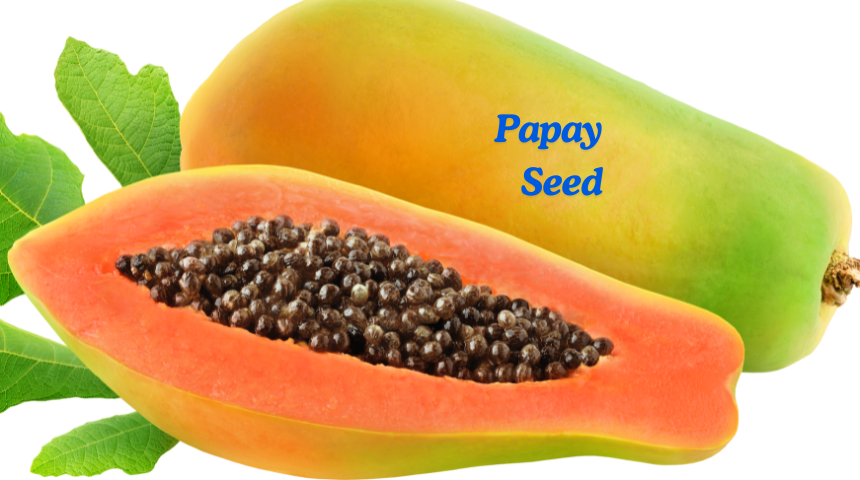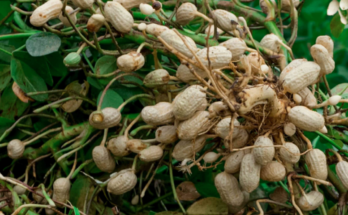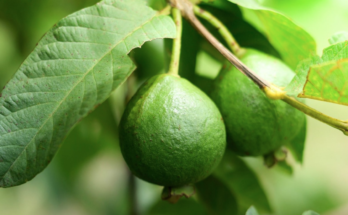Discover the art of how to grow papaya from seed? Follow my expert guide for step-by-step instructions and fill your backyard with papaya trees.
Friends, have you ever thought about the potential of small black seeds of ripe papaya?
Let’s see how to grow papaya from seed today. I’m thrilled to guide you through a step-by-step process on how to turn these often-discarded seeds into thriving papaya plants. Let’s see.
What Do Papayas Look Like?
Papayas are distinctive tropical fruits with elongated shapes and smooth, thin skin that ranges in color from green to yellow-orange when ripe.
When cut open, they reveal vibrant orange or pinkish flesh filled with small black seeds clustered in the center.
Their soft, buttery texture and sweet, tropical flavor make them a delight to eat fresh or in various culinary creations.
Overall, papayas boast a unique appearance that sets them apart in the fruit kingdom.

How To Grow Papaya From Seed?
To grow papaya from seed, start by collecting ripe papaya seeds from a fresh fruit. Scoop out the seeds and remove any pulp. Rinse the seeds thoroughly to remove any remaining pulp or debris.
Next, allow the seeds to dry completely on a paper towel. Choose a sunny spot with well-draining soil for planting. Plant the seeds about 1/4 inch deep in the soil.
Keep the soil consistently moist, but not waterlogged. Germination typically takes about two weeks. Once the seedlings have sprouted, thin them out to allow the strongest ones to thrive.
Provide regular care, including fertilizing and watering, to ensure healthy growth. With patience and proper care, you’ll soon have thriving papaya plants in your garden!
The Steps For Growing Papaya From Seed Are As Follows
The Easiest way how to grow papaya is from seed.
1. Selecting the Perfect Papaya Seeds
When selecting papaya seeds, opt for fruits that are fully ripe and exhibit vibrant colors. Collect healthy and strong ripe papayas of good variety. Avoid seeds from overly mature or under-ripe papayas, as they may not germinate as successfully.
Cut the papayas lengthwise. Then collect the middle black seeds and dry them in the sun.
An advantage of this is that most of the seeds are likely to become daughter plants. And female trees have more fruits. Sharing from real experience.
Look for seeds that appear plump and healthy, indicating viability for planting.
Consider the variety of papaya you wish to grow, whether it’s a dwarf variety suitable for containers or a larger variety for outdoor cultivation.
2. Remove the seed coat.
Seedcoat removal is an additional difficulty for commercial papaya cultivation. So, in my opinion, there is not much need to remove the seed coat.
3. Allow the seeds to dry.
Papaya seeds need to be dried well in the sun. It’s crucial to allow the papaya seeds to dry thoroughly. This process helps prevent mold and fungal growth while enhancing seed viability.
Simply spread the seeds out in a single layer on a clean, dry surface, preferably in a sunny spot. Allow them to air dry completely, which typically takes a few days.
Once dry, the seeds are ready for planting, ensuring the best chances of successful germination and healthy growth.
4. Prepare the land.
The soil should be tidied up with 2-3 tillers and a ladder by mixing organic fertilizers as required. To prepare the land for planting papaya seeds, begin by clearing the area of any debris or weeds.
Then, using a power tiller, loosen the soil to a depth of 2-3 tillers, breaking up any compacted areas. Next, incorporate organic fertilizers into the soil as needed to improve its fertility and nutrient content.
Mix the fertilizers evenly throughout the soil using a rake or hoe. Finally, smooth the surface of the soil with a garden rake to create a level planting bed, ready for sowing the papaya seeds.
This ensures optimal conditions for seed germination and healthy plant growth.
5. Prepare seed bed
Depending on the size of the seeds, the seed bed should be made. At least 6 m long and 4 m wide 1 seedbed should be taken. Then the seeds should be sown.
The seeds should be covered with a little soil. Depending on the soil moisture, water should be sprinkled occasionally. When the seeds germinate, one to one and a half feet long seedlings should be raised and planted in the ground.

6. Thin out the seedlings.
In this way, if the healthy seedlings are lifted and planted in the ground, the seedbed seedlings are thinned. Seedlings begin to grow.
This process helps reduce overcrowding and competition for resources, allowing the remaining seedlings to thrive.
Transplant the lifted seedlings into the ground or discard them as needed. As the remaining seedlings continue to grow, ensure they receive adequate water and sunlight to support healthy development.
Thinning the seedlings promotes better air circulation and nutrient uptake, leading to more robust papaya plants.
7. Transplant papaya seedlings.
To transplant papaya seedlings, choose a suitable location with well-draining soil and full sunlight. Dig holes in the ground or prepare planting pots, spacing them at least 8-10 feet apart to accommodate the mature papaya trees’ size.
Carefully lift the seedlings from the seedbed, ensuring to disturb their roots as little as possible. Plant the seedlings at the same depth they were growing in the seedbed, gently patting down the soil around them to secure them in place.
Water the transplanted seedlings thoroughly to help them establish in their new location. Monitor the soil moisture and provide regular watering as needed to support their growth.
With proper care, the transplanted papaya seedlings will continue to develop into mature, fruit-bearing trees.
How to Care for a Papaya Tree?
1. Provide Adequate Sunlight: Ensure your papaya tree receives at least six to eight hours of sunlight daily for optimal growth and fruit production.
2. Water Regularly: Keep the soil consistently moist but not waterlogged. Water deeply, allowing the soil to dry slightly between waterings to prevent root rot.
3. Fertilize Wisely: Apply a balanced fertilizer every 2-3 months during the growing season to provide essential nutrients. Use a fertilizer high in potassium to promote fruit development.
4. Protect Against Pests:
While papayas are relatively disease-resistant, they can still be susceptible to fungal infections, particularly on the roots.
Monitor the plant regularly for signs of fungal diseases such as root rot, which may manifest as wilting or yellowing of leaves, stunted growth, or blackened roots.
To prevent fungal infections, ensure proper soil drainage and avoid overwatering. Consider using fungicides or organic treatments if fungal issues arise.
Additionally, protects papayas from common pests like aphids, scales, and spider mites by using insecticidal soaps or natural predators.
Regular inspection and prompt action can help maintain the health of your papaya tree.
5. Prevent Diseases:
Keep your papaya tree healthy by avoiding overwatering and providing proper air circulation. Treat fungal diseases promptly with fungicides if necessary.
6. Support the Tree: Provide support for your papaya tree by staking or tying it to a sturdy support structure to prevent toppling in strong winds or under the weight of fruit.
7. Harvest Ripe Fruit: Harvest papayas when they reach full size and color but are still firm to the touch. Use a sharp knife to cut the fruit from the tree, leaving a small portion of the stem attached.
Allow harvested papayas to ripen further at room temperature before consuming.
When do papayas fruit and how much?
Papayas typically begin to fruit around 6 to 12 months after planting, depending on growing conditions and variety.
Once established, a healthy papaya tree can produce fruits continuously throughout the year, with peak fruiting seasons varying based on climate.
A single papaya tree has the potential to yield dozens or even hundreds of fruits annually, depending on factors such as age, size, and health of the tree, as well as environmental conditions and cultural practices.
With proper care and favorable conditions, papaya trees can provide abundant harvests for many years.
How long do papayas live?
Papaya trees have a relatively short lifespan compared to some other fruit trees, typically living for about 4 to 6 years.
However, under optimal growing conditions and with proper care, some papaya trees may live longer, up to 10 years or more.
Factors such as climate, soil quality, disease resistance, and cultural practices can influence the lifespan of papaya trees.

Regular maintenance, including pruning, fertilizing, and pest control, can help prolong the life of papaya trees and ensure consistent fruit production.
How Long Does It Take To Grow Papaya From Seed?
Papayas grown from seed typically take about 6 to 12 months to reach maturity and begin fruiting, though this timeline can vary depending on various factors such as growing conditions, climate, and papaya variety.
Some fast-growing papaya varieties may start fruiting as early as 6 months after planting, while others may take closer to 12 months or longer.
It’s essential to provide optimal growing conditions, including ample sunlight, warm temperatures, and well-draining soil, to promote healthy growth and fruit production.
With proper care and favorable conditions, papaya plants can grow rapidly and produce abundant harvests within their first year of growth.
Can Papaya Be Grown In Pots?
Yes, papayas can be grown in pots or containers, making them suitable for cultivation in small gardens, balconies, or indoor spaces.
When growing papayas in pots, choose a large container with drainage holes to allow excess water to escape. Use a well-draining potting mix enriched with organic matter to provide essential nutrients.
Ensure the pot receives plenty of sunlight, ideally at least six to eight hours per day. Regular watering and fertilization are necessary to support healthy growth and fruit production.
Additionally, consider selecting dwarf or compact papaya varieties suited for container cultivation to optimize space and ease of care.
With proper attention to watering, sunlight, and soil quality, papayas can thrive in pots and provide a bountiful harvest of fresh fruits.
FAQ
How long does it take for papaya seeds to germinate?
Papaya seeds typically germinate within 2 to 4 weeks after planting, depending on temperature and soil conditions.
Do papaya trees need full sun to grow?
Yes, papaya trees thrive in full sunlight and require at least 6 to 8 hours of direct sunlight daily for optimal growth and fruit production.
Can papaya trees be grown indoors?
While challenging, papaya trees can be grown indoors in large containers in sunny locations. However, fruiting indoors may be limited.
How often should papaya plants be watered?
Water papaya plants regularly, keeping the soil consistently moist but not waterlogged. Water deeply, allowing the soil to dry slightly between watering’s.
When can I expect my papaya tree to start fruiting?
Papaya trees typically start fruiting 6 to 12 months after planting from seed. However, fruiting may vary depending on growing conditions and variety.
Conclusion
In conclusion, growing papaya from seed is an exciting journey filled with the promise of lush green and delicious fruits.
With proper care and attention, anyone can grow a thriving papaya tree either commercially or indoors in their own space.
From selecting the perfect seed to providing the best conditions for growth, every step is a rewarding experience.
So, roll up your sleeves, dig into the ground, and embark on this green expedition with confidence. Soon, you will enjoy the sweet reward of your labor, fresh papayas ripe for the picking!



